3 Ways To Tell How Far Lightening Is Away From You
Because of modern technology, being struck by lightning has largely become a thing of the past in most countries. Stronger structures, weather vanes, and a greater understanding of how lightning works have all contributed to safer thunderstorms. But you might still wonder how far lightning is away from you. Whether you’re camping, working outdoors, or just curious, there are a few things you can do to figure out how far away lightning is, and if you need to get somewhere safe.
As with all things related to natural phenomena, be careful. We don’t advise going outside during a thunderstorm to observe lightning and determine its distance. All of these ways to tell how far lightning is away from you can be done from the comfort of your own home. No need to risk your life for curiosity!
General Lightning Safety
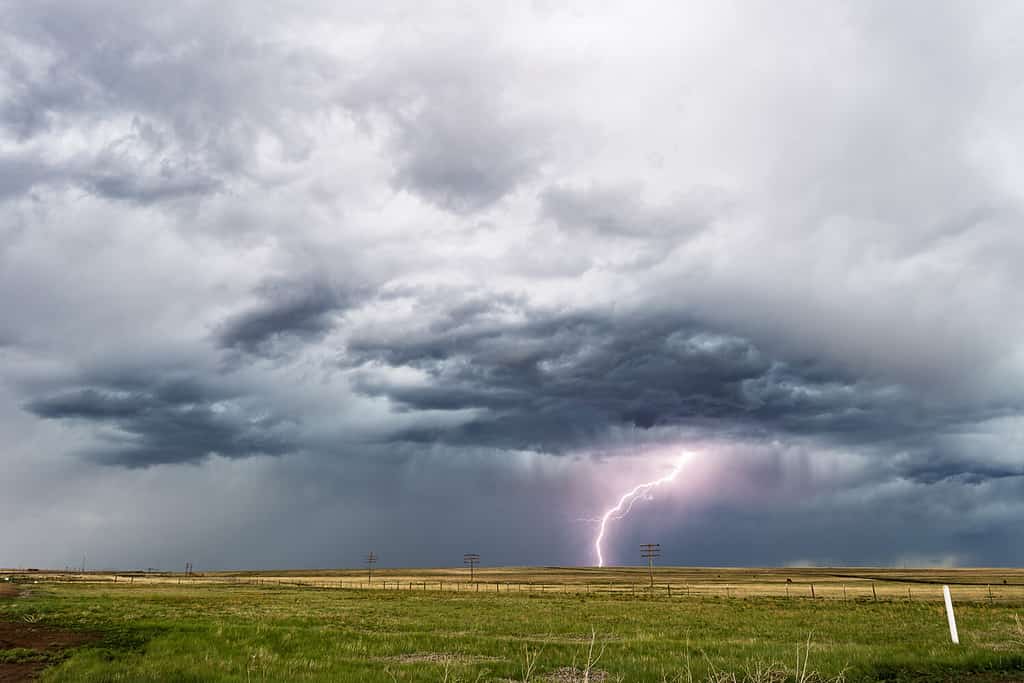
©John D Sirlin/Shutterstock.com
If you are anywhere near a thunderstorm and you can hear the thunder, you are close enough to get hit by lightning. This is true even if the sky above you is bright and blue and it looks like a nice day. Lighting can strike over 100 miles away from the main storm cell. Sound changes as it travels through the air. Things like humidity and temperature can affect how the thunder changes, so you can’t always depend on how thunder sounds to determine if you are safe. If you can hear it, you need to get somewhere safe.
That being said. If you are indoors and want to figure out how far the lightning is, or if you are in danger and need to keep track of the distance of subsequent lightning strikes, there are a couple of things you can do.
Method 1: Flash-to-Bang Method
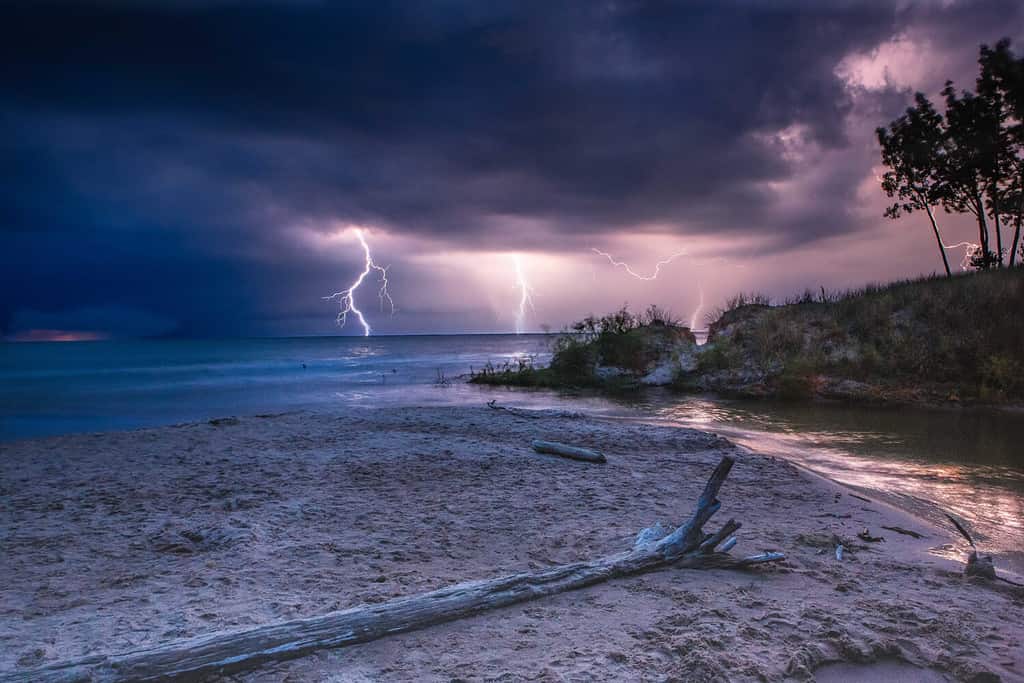
©William T Smith/Shutterstock.com
This is the counting method you probably learned in elementary school. This is the most common, and the most reliable. Really, aside from high-tech equipment, this is the only way to determine how far away lightning is.
To determine the distance of a single lightning strike, do the following. First, wait until you actually see a lightning strike anywhere in the distance. Second, count every second that passes until you hear the thunder from that lightning strike. Third, divide the number of seconds that passed by five to get a rough number of miles away that lightning strike was.
For example, you saw a lightning strike and counted fifteen seconds until you heard the thunder. When you divide that by five, you get three miles. Now, the actual distance can be further away or closer based on many factors like temperature, altitude, and humidity, but the general distance will be pretty accurate.
If you prefer the metric system, you can determine the distance in kilometers. To do this, simply divide the number of seconds by three, instead of five. So, if ten seconds passed between the flash and the thunderclap, you would get about 3.3 kilometers between you and the lightning.
Why does the counting method work?
Sound travels at 1,125 feet per second. There are 5,280 feet in a mile. Because sound travels at a predictable speed, you can use it as a reliable measure of how much distance it covers between you and where the lighting struck. Even if the measure can be more or less than an actual mile each time, it will remain consistent throughout the duration of the storm you are measuring.
It might be difficult to use this method if there are many lighting strikes happening at the same time in a small area. You might have a hard time determining which lighting strike you are measuring, and which thunderclap belongs to which lightning bolt.
Also, thunder can only travel effectively for about 10 miles before it dissipates. If you are watching lighting and can’t hear the thunder, then it is probably further than ten miles away. A phenomenon known as “heat lightning”, in which lightning happens without any thunder at all, is a folk misconception. Lightning always has thunder.
Method 2: Online Technology
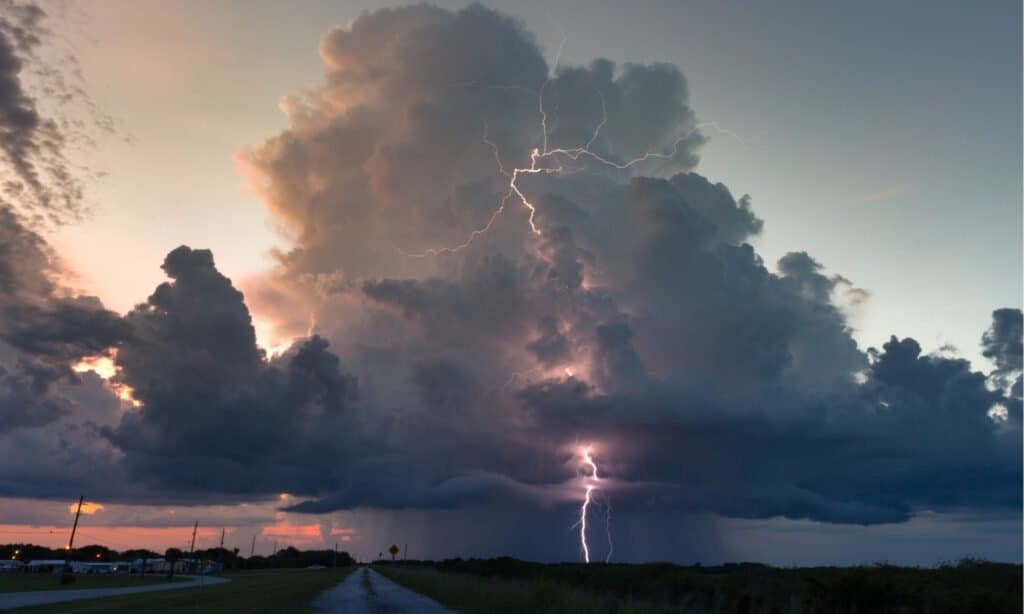
©Jeff Gammons StormVisuals/Shutterstock.com
There are a few online tools that track storms and display every occurrence of lighting in real time. If you are outdoors and really need to know if a storm is heading your way, if you are in danger, or if you need to move camp, these tools can be very useful. They will only work if you have internet access of course.
Most importantly, checking the velocity and direction of the storm will be most important when using these online resources. You can measure how far away lighting is, certainly, but knowing where they are headed is important for your safety and camping fun.
Resources you can use include the National Weather Service’s Severe Storm Tracker or their ZSE Weather Loop. You can use the lightning analysis from weather.us. And finally, you can use community tools like LightningMaps. There might be better tools for you based on your location. We encourage you to find them and learn how to use them!
Method 3: Common Sense Method
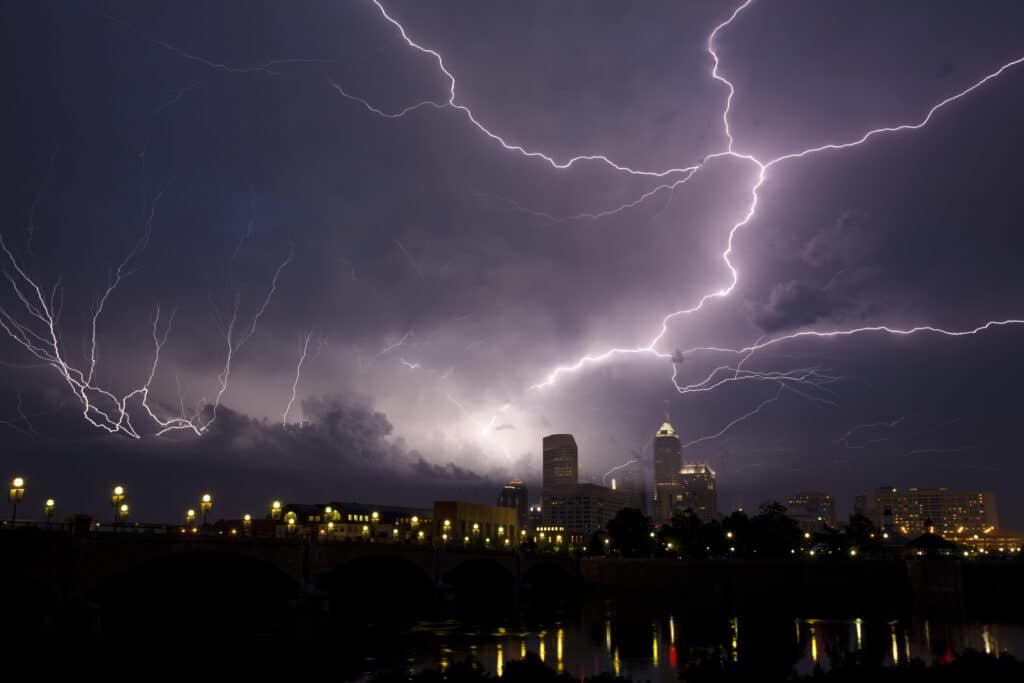
©iStock.com/alexeys
If, for some reason, you aren’t able to count the seconds between the lighting and the thunderclap, or you can’t see the lighting at all, you can always use common sense to keep you safe.
When lighting is close, its characteristics will be a little different from lightning that is far away. For example, lightning that is far away will sound deeper, and have a “rolling thunder” sound. You will probably even hear the thunder for one lighting strike a couple of times depending on your surroundings. This is because the thunder will echo off the hills and buildings around you. As sound travels, it dissipates and loses energy, creating a deeper rolling sound.
Lightning that is closer will have a “sharper” crack sound. It will also be much, much louder. Obviously.
Lightning doesn’t just hit the ground, however. While this is the most well-known form of lighting, and often produces the loudest thunder, it is not the most common. Most lighting actually occurs high in the clouds, hidden within the storm cell itself. The dark clouds and rain will often obscure and completely hide this lighting and its thunder. This makes it extremely difficult to know where the lighting is, and how far away it is.
Finally, if lighting is dangerously close, there will be some other warning signs. The most important being your own body. When lighting is about to strike a particular area, static electricity will begin to build up in that area. This includes the electricity in your own body. If you are outside and you feel the hairs on your arms and head begin to stand up, you should get as low as you can or indoors as soon as possible.
Conclusion
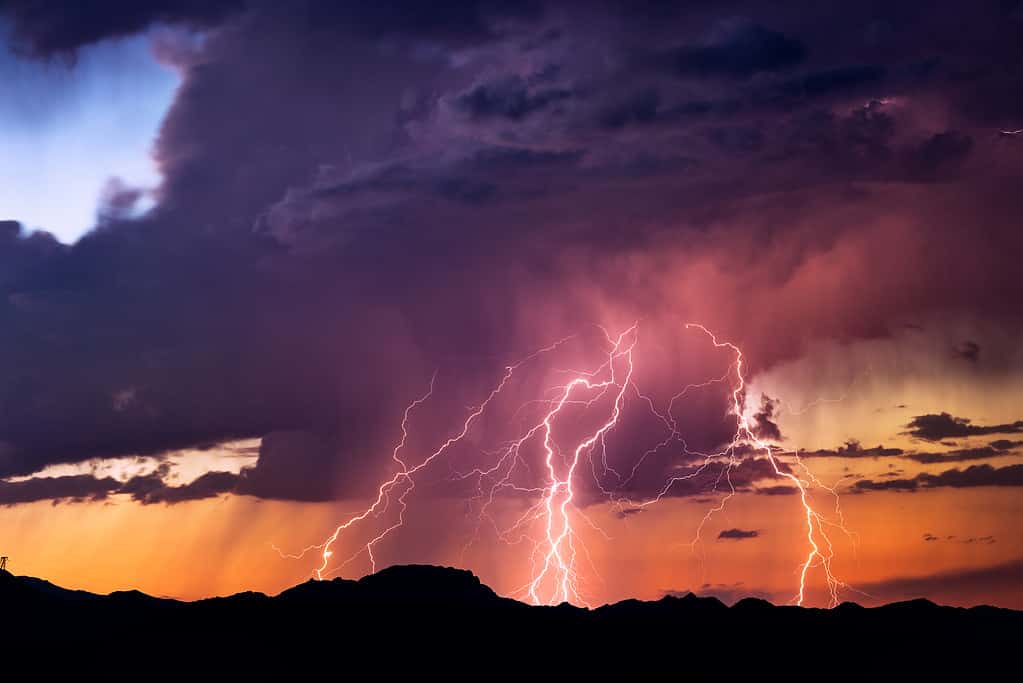
©mdesigner125/iStock via Getty Images
That’s it. There really is no other reliable way to determine the distance of lighting other than using sound or technology. The good thing is, sound is predictable and reliable.
In the end, if you have any doubts about whether it is safe to go outside, go swimming, or do anything outdoors, you should stay inside. The National Weather Service and NOAA both advise staying indoors or finding strong shelter if there is any sign of lighting within six miles. If you are counting, that would mean you count 30 seconds between the flash and the bang.
Once the lighting storm has passed outside of that range (more than thirty seconds between flash and bang) then you can begin to consider going back outside if you really need to.









